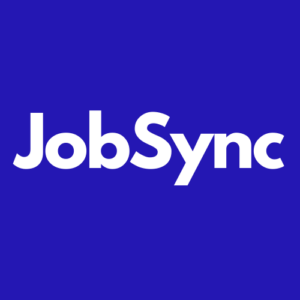
Many job seekers are looking for more in their work than just a paycheck and a strong mission can make your company a magnet for top talent with heart and soul. But you have to get the story out there, so candidates know which organizations have a mission worth supporting and which are merely talking a big game.
Salary is an incredible solution to talent acquisition challenges when there is a profit motive and markets are the primary benchmark for measuring success. It doesn’t do nearly as good a job when mission, not markets, provides the underlying motivation for the organization.
That’s part of the reason why hiring for a mission-driven organization can be a tricky task. Often, these organizations are facing a triple constraint: they have limited financial resources, specific soft skill requirements, and a burning need for individuals who share their values. Most mission-driven companies see themselves as servants of the needs of their customers. An inspired and empathetic workforce is foundational for success because—and this is true of every organization, mission-driven or not—you are you hire.
At the same time, there’s a growing movement of people who are seeking to be part of something bigger than themselves. While it’s most prevalent in the conversations around what Gen Z wants in their employers, the need to make a difference has always driven at least part of the workforce, else we would never have teachers, nurses or non-for-profits. We humans want to know that what we do has depth and makes a difference. There’s a natural synergy between mission-driven employers and potential employees seeking a cause they can get behind—both parties can benefit immensely from each other.
For talent acquisition professionals operating in this space, it makes sense that your organization’s mission will impact the way you hire talent. That’s because:
Your mission itself is a natural filter of relevant people applying to you based on their own motivations and background.
Your process must be structured to actively seek out people who have a similar value set (and reject those who do not).
Once you hire someone, you’ll want to cultivate an environment where they can actively live out the mission. Talent then becomes a self-reinforcing cycle, as employees who embody the mission attract more like-minded individuals.
So how do you, as a talent professional, support the needs of your mission-driven organization? The following strategies are inspired by our recent roundtable with Bill Musman, VP of Talent Acquisition and Resource Management at AmeriHealth Caritas. AmeriHealth is a Medicaid managed care organization with 6 million members across 13 states. Everything they do is driven to help eradicate poverty, and that mission is embedded across the TA function—how they recruit, who they recruit, and what those people do when they’re on board.
Find clarity in the story
Recruiting is, in large part, a marketing effort. As with any marketing effort, how your mission is positioned and described can make a huge difference in how your roles are perceived. Both for-profit and nonprofit organizations can make their jobs sound much more inviting and impactful when they tell their stories in a way that helps candidates see how their work will help support the communities they serve.
What we’re talking about here is creating an Employee Value Proposition (EVP) that keeps the company mission close and elevates it to create a sense of community and pride for working at the organization. In the mission-driven space, this approach involves being more of a storyteller than a story creator. You’re not building an EVP from ground zero by first having to create the activities, initiatives and events that will foster a sense of mission; you’re teasing out and promoting what’s already there.
As Musman says of his own organization, “We have an awesome story to tell and we have great people who are impacting the lives of people every single day […] The first step is to build the EVP and make sure that we’ve got that right, that we’re using the right tone and the right messaging. From a TA perspective, I’m looking at how we build assets to tell our stories.”
You only get the bump when candidates realize your mission matches their values, so nailing the story is critical.
Build candidate personas for mission fit
There will always be a specific kind of person who will lean into a mission like yours. What do they look like? For example, many mission-driven organizations place a premium on empathy, adaptability, resilience, and cultural competency—important traits that may not be as highly valued in other types of companies.
“Almost 70% of the people that we hire are member-facing,” Musman says. “For us, the most effective people are the ones that have experienced what our members are going through. That’s one of the things we’re trying to focus on; as we look at our roles, how do we engage folks that are going through what our members are going through so they can relate?”
These ideal candidates may be lurking in places outside of traditional candidate funnels, so you’ll need to get creative about finding them and getting your story in front of them. Musman, for example, has teams going out into the same communities that AmeriHealth serves, connecting with community-based programs that are offering training and life-skills development to people with a similar profile to their members, so for those members that are looking for a new opportunity, AmeriHealth is at top of mind.
In this sense, recruiting becomes an extension of AmeriHealth’s mission to eradicate poverty. “One of the approaches that we’re going to be using more actively moving forward is to identify the talent that needs the work, so we can offer them those opportunities,” Musman says,
Take stock of the full range of capabilities the applicant offers
Hiring for empathy or whatever other mission-aligned traits you’re seeking means both a higher touch and also more bespoke selection process on your part. Traditional interviews that focus on past experience may be less helpful than behavioral interviews to assess a candidate’s alignment. Or, you may have to rip up the rule book and focus on the stories candidates have to tell, and the journey they took to get there, to make sure you’re not passing over great candidates just because they’re different.
“In a lot of cases, [our members as candidates] may not have the best resume, they may not have the best interviewing skills, but they know what our members might be going through,” Musman says. “We’re working on revamping our job descriptions and working with our hiring managers to make sure that they’re being unbiased when it comes to interviewing.”
Recruiters, too, must embody the mission—you can’t hire for empathy if you come across as uncaring and transactional, with rigid deadlines and long lists of requirements. “I want to make sure that our recruiters are building good, strong, trusted relationships with their candidates. That’s sometimes difficult to do in a high-volume environment, but I am trying to hold them accountable for making sure that they’re staying in touch,” Musman says.
Candidate satisfaction surveys and Net Promoter Scores are potentially another way—an outside way—of quantifying the impact of recruitment activities that are built around mission fit. It’s not an exact science, but can help uncover patterns and inconsistencies between what you want and the process you’re using to find it.
Define the metrics
Like any recruiting function, metrics such as time to fill and cost per hire will be important, even though velocity metrics may run counter to the high empathy, high touch approach that many mission-driven organizations will need to take. Every TA organization needs to operationalize and support the business, so it’s important to track the key efficiency metrics and work on those that are sub-par.
Beyond traditional recruiting metrics, you’ll also need to chart progress towards mission fit. That may look different from organization to organization, be it—are these employees more loyal? Do they stay longer? Are they performing better? Are they being promoted? Are they learning new skills? Are they actively doing a great job?
“A successful recruiter should know a great candidate when they see it, be able to get them into the organization, find them, assess them, close them, but then also make sure that those folks are staying, getting promoted and moving throughout the organization,” Musman says. It’s a full cycle approach that encompasses not just hiring, but nurturing and growing talent within the organization and pulling those stories into the EVP.
Live the mission
“Authenticity” was Merriam Webster’s word of the year in 2023 and it’s a word that should be front of mind for any mission-driven talent organization. Job seekers will quickly suss out whether an organization’s practices match their public mission. If there’s any hint of mission washing, candidates will smell it a mile off.
At AmeriHealth, Musman says it’s a defined goal for the business to invest time and money into the communities they serve, and for every employee to put in a certain amount of volunteering hours. “It’s one of our strategic business goals that every single person, what we call a care crew, will go and spend time outside the office doing events. I’m a huge basketball fan. We have a program called Healthy Hoops, which I love. And probably once a week, I’ll get a message from our community investment team, ‘here are the volunteer opportunities that are available, go sign up for one.'”
It’s at this point that we come full circle. When employees are infectiously inspired by the work they do and the contributions they make, it becomes easy to personalize the impact of their work by sharing stories of the mission being a living, breathing thing that changes lives. These are the stories that feed the EVP, nourish recruiters, and satisfy the mission-hungry job seeker.
Is this process fool proof? Probably not. But for those willing to invest the time, effort, and resources into hiring for mission fit, the rewards can be great—both for the organization’s success and its impact on the recruiters and candidates on the front lines. As Musman says, his talent team isn’t perfect. “I’d like them to use this technology better, and utilize the tools that we have, and those kinds of things. But at the end of the day, we hired 4,000 people last year. We know we’re doing something right.”


